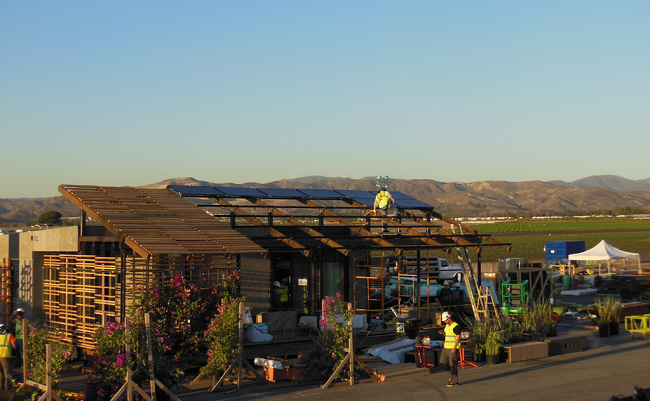
The intercollegiate team of university students sponsored by Sundt in this year’s U.S. Department of Energy Solar Decathlon won fifth place in the architecture category at the prestigious competition, which wrapped up yesterday. The students from Team “ASUNM” were from Arizona State University and the University of New Mexico.
“It’s a privilege to support this group of young individuals who have an opportunity to create something that will make a positive impact on the world,” said Sundt President and CEO David Crawford. “We have always strived to protect the environment through sustainable designs and practices, and this competition embodies all of that while educating our future engineers, architects and community leaders.”
Twenty teams from colleges and universities from around the world competed to build solar-powered, high-efficiency homes that combine affordability, consumer appeal and design excellence. Each team’s home was judged in 10 categories ranging from best architecture and engineering to optimal energy production.
Team ASUNM spent the last two years designing and building an 850-square-foot home that sits within the landscape, creating micro-climates. Aptly named SHADE (Solar Homes Adapting for Desert Equilibrium), the home design features an independent solar canopy comprised of 36 high-efficiency mono-crystalline photovoltaic panels; phase-change material distributed throughout the house, storing thermal energy and buffering temperature fluctuations; a capillary radiant system in the ceiling that passively radiates the temperature of the room; a thermal battery that stores water to make ice at night and uses it during the day to cool the space; and a whole-house system control that monitors and controls the efficiency of the solar panels.
Other features of the home include tanks that store collected rainwater for irrigating the landscape, a fiber-cement board that reflects sunlight, rain screens that help grow native species of plants, screens on the walls that provide shade and a still boundary layer of air, modular furniture that allows flexible room space to be configured and a natural clay coating on the interior walls to provide a humidity buffer.
Several interior and exterior photos of the home can be seen here.